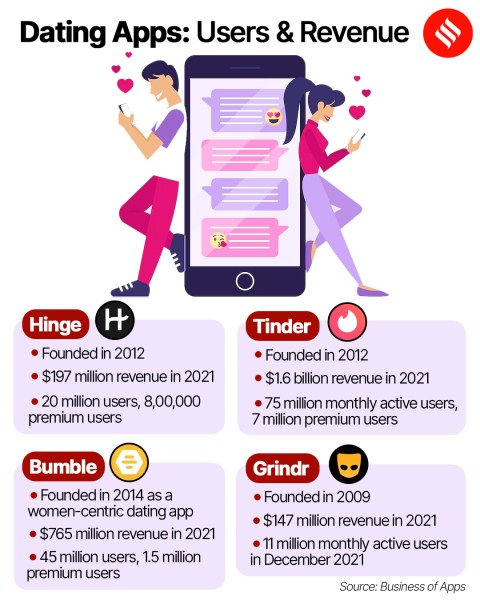
Evolution of Dating in the Digital Era
Traditional dating vs. online dating
Traditionally, dating revolved around face-to-face interactions in social scenarios like parties or cafés. People relied on mutual friends to introduce them to potential partners. Fast forward to today, online dating has shifted this paradigm entirely. Now, individuals can scroll through profiles in the comfort of their homes, leading to connections that might never have occurred in person.
Popular dating apps and websites
Several dating apps and websites have emerged as frontrunners in this digital revolution. Some of the most widely used include:
- Tinder: Known for its swiping mechanism and casual encounters.
- Bumble: Pioneers of women making the first move.
- OkCupid: Uses in-depth profiles and quizzes for matching.
- Match.com: Offers a more traditional approach to dating, focusing on long-term relationships.
These platforms have transformed the dating landscape, making it easier to connect, regardless of location.

Impact of Technology on Dating Behavior
Changing communication patterns
As dating has evolved, so have the ways people communicate. Text messages, emojis, and gifs have largely replaced traditional phone calls and face-to-face conversations. This shift allows for:
- Instant communication: Messages can be sent and received at any time.
- Reduced anxiety: Texting before meeting can ease nerves.
- Expanded vocabulary: Emojis convey emotions that words sometimes cannot.
However, this might also lead to misunderstandings, as tone is often lost in text.
Influence of social media on relationships
Social media plays a huge role in modern relationships, often blending personal and public lives. Platforms like Instagram and Facebook let partners share moments, but they can also introduce pressure. For example:
- Public displays of affection (PDA) can fuel insecurities.
- Friend interactions online may lead to jealousy.
Navigating this landscape requires both partners to establish boundaries to maintain a healthy relationship.

Tech Tools for Dating Success
Matching algorithms
The heart of many dating apps lies in their sophisticated matching algorithms. These algorithms analyze user profiles and preferences to suggest potential matches. Factors might include:
- Shared interests: Hobbies or activities you both enjoy.
- Location: Proximity to enable easier meetups.
- Behavior patterns: Engagement with other profiles.
For instance, using an app like OkCupid, users may notice tailored matches based on their quiz answers, enhancing compatibility from the start.
Virtual dating features
With the rise of virtual dating, features like video calls and virtual meetups have become essential. These tools make it easier for couples to connect while minimizing the pressure of in-person encounters. They offer:
- Comfort: Meeting from home can reduce anxiety.
- Interactive experiences: Virtual games or movie nights can build connection.
- Safety: Easing into relationships can be conducted at one’s own pace.
By leveraging these tech tools, singles can maximize their dating success and build meaningful relationships.

Challenges and Concerns in Tech-Fueled Dating
Privacy and security risks
While technology simplifies dating, it also raises serious privacy and security concerns. Sharing personal information online can lead to risks such as identity theft or catfishing. For example, many users don’t realize that:
- Location data can be easily traced.
- Photos might be misused without consent.
- Messages can be stored indefinitely, increasing vulnerability.
Therefore, using tips like keeping certain details private and utilizing platform privacy settings is crucial for staying safe while dating online.
Decreased face-to-face interaction
Another challenge is the decline in face-to-face interactions, which are vital for building genuine connections. While virtual communication is convenient, it can lead to:
- Misinterpretation of intentions or emotions.
- A loss of non-verbal cues, like body language.
- Struggles with initiating real-life connections due to reliance on screens.
Many find that balancing online interactions with in-person meetings is essential for successful relationships, as authentic connections thrive in real-world settings.

The Future of Tech-Enabled Dating
Augmented reality dating
As technology advances, augmented reality (AR) is poised to revolutionize the dating landscape. Imagine meeting someone in a virtual café, where you can interact with their 3D avatar. AR dating offers exciting possibilities such as:
- Immersive experiences: Create shared virtual spaces to bond over activities.
- Realistic interactions: Engage with a more authentic representation of potential partners.
- Enhanced compatibility testing: Discover interests through interactive features.
This innovative approach can transform how people connect, making dates feel more dynamic and engaging.
Role of artificial intelligence
Artificial intelligence (AI) will also play a significant role in the future of dating. AI-driven tools can analyze user behaviors to refine match suggestions, improving compatibility. Key benefits include:
- Personalized recommendations: Tailoring matches based on preferences and past interactions.
- Intelligent chatbots: Engaging users in conversations to warm up potential matches.
- Predictive analytics: Anticipating relationship dynamics for proactive guidance.
With these advancements, tech-enabled dating holds the promise of facilitating more meaningful connections and enriching romantic experiences.

Ethical Considerations in Tech-Infused Dating
Algorithm bias and discrimination
As dating platforms increasingly rely on complex algorithms, biases can inadvertently seep into matchmaking processes. This can lead to unfair discrimination based on:
- Demographic factors: Age, race, or location discrepancies can skew results.
- Behavioral patterns: Past interactions may undermine potential matches if interpreted negatively.
For instance, if an algorithm favors younger demographics, some valuable connections may be overlooked, affecting diversity in dating. Addressing these biases is crucial to ensure fair and equitable dating experiences.
Consent and data usage issues
Another pressing concern revolves around consent and how dating apps handle user data. Many users may not fully understand:
- Data collection practices: Which personal details are stored and for what purposes.
- Consent limitations: Users often agree to terms without reading the fine print, risking potential misuse of their information.
For a responsible dating experience, platforms must prioritize transparency and prioritize user understanding. By fostering informed consent, users can engage with dating technology more confidently and safely.
